What do Japanese beetles eat? Japanese beetles are a worry for many home gardeners and for major farmers that run commercial farms. These beetles are known for destroying many plants at an alarming rate. Understanding what these beetles eat is a great first step in your fight to keep your garden safe. So, let us look at what Japanese Beetles eat.
Japanese beetles are not picky when it comes to the plants they will consume. These beetles will eat almost anything, but they do have some plants that they will go for first. These plants include fruit trees like plums and peach trees, and they will go after vegetables like peppers and eggplant.
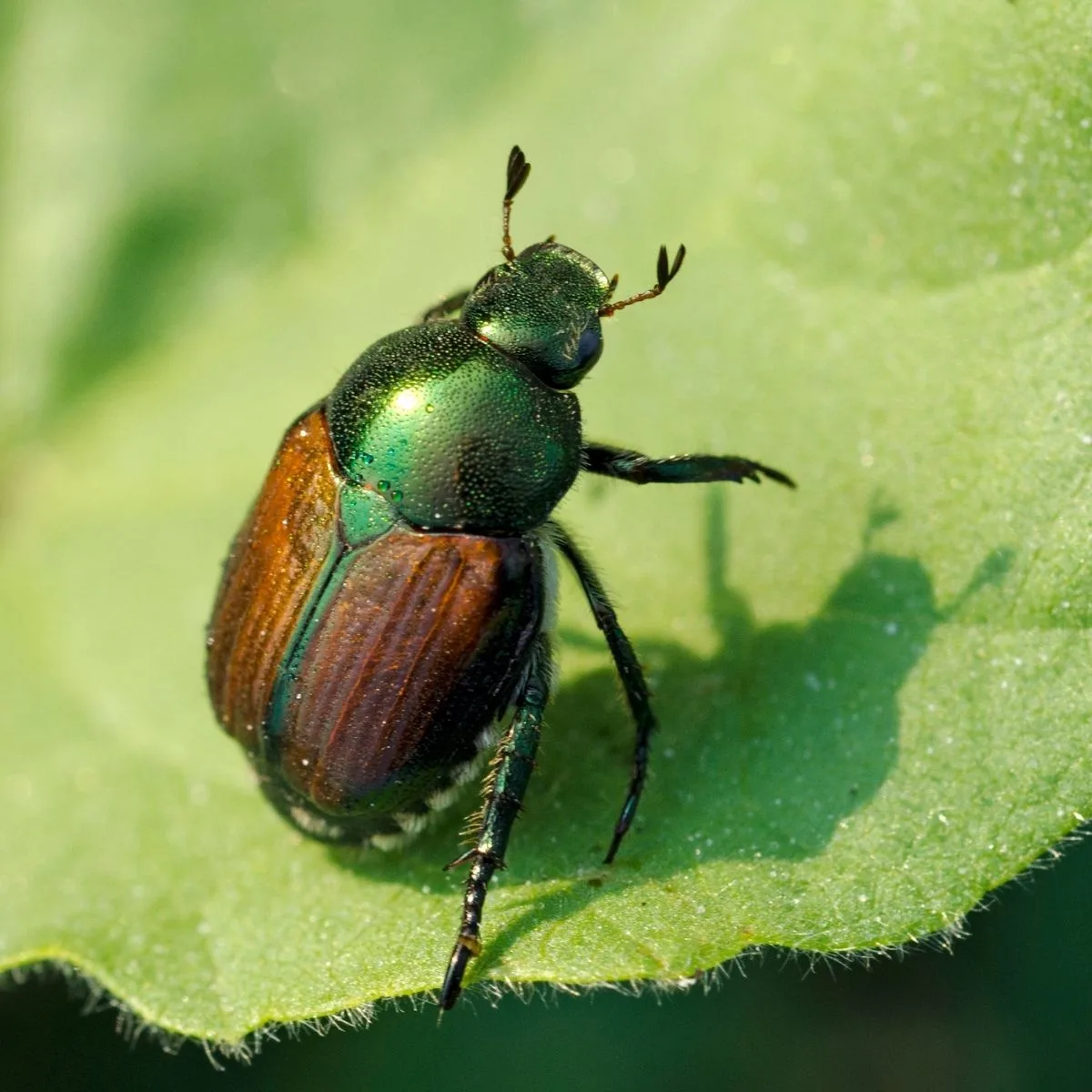
What are the other plants that the Japanese beetle will attack first in your garden? What damage can they do to your plants? Which plant species do the beetles mainly prefer? Let us find out!
What Are Japanese Beetles?
There are many different types of beetles out there and as a gardener, it’s important to learn about the ones that can show up in your area and in your garden. The Japanese beetle (Popillia japonica) is a species of scarab beetle. Adults can average 15mm in length and about 10mm in width.
The best way to identify them is by their iridescent copper-colored elytra and green thorax and head. In its native home of Japan, this beetle is not very destructive because there are plenty of natural predators to help control the population.
But here in the United States, they are an invasive species and can do a lot of damage when the population is not controlled in your garden.
They were first found in the US in 1916 after they were accidentally introduced in New Jersey. From there, they spread all over the Eastern US, except for Florida, and have been moving West steadily.
How to identify Japanese beetles
Before you can do anything about these invasive beetles in your garden, you need to know how to identify them. Many beetles look alike, but there are things about this one that set it apart and makes it easier to spot.
There are two basic life stages of the beetle for you to learn to identify:
- Larvae
- Adult
It can be harder to identify these beetles at the larvae stage but can be dealt with before they cause too much damage if you do.
Japanese beetle larvae
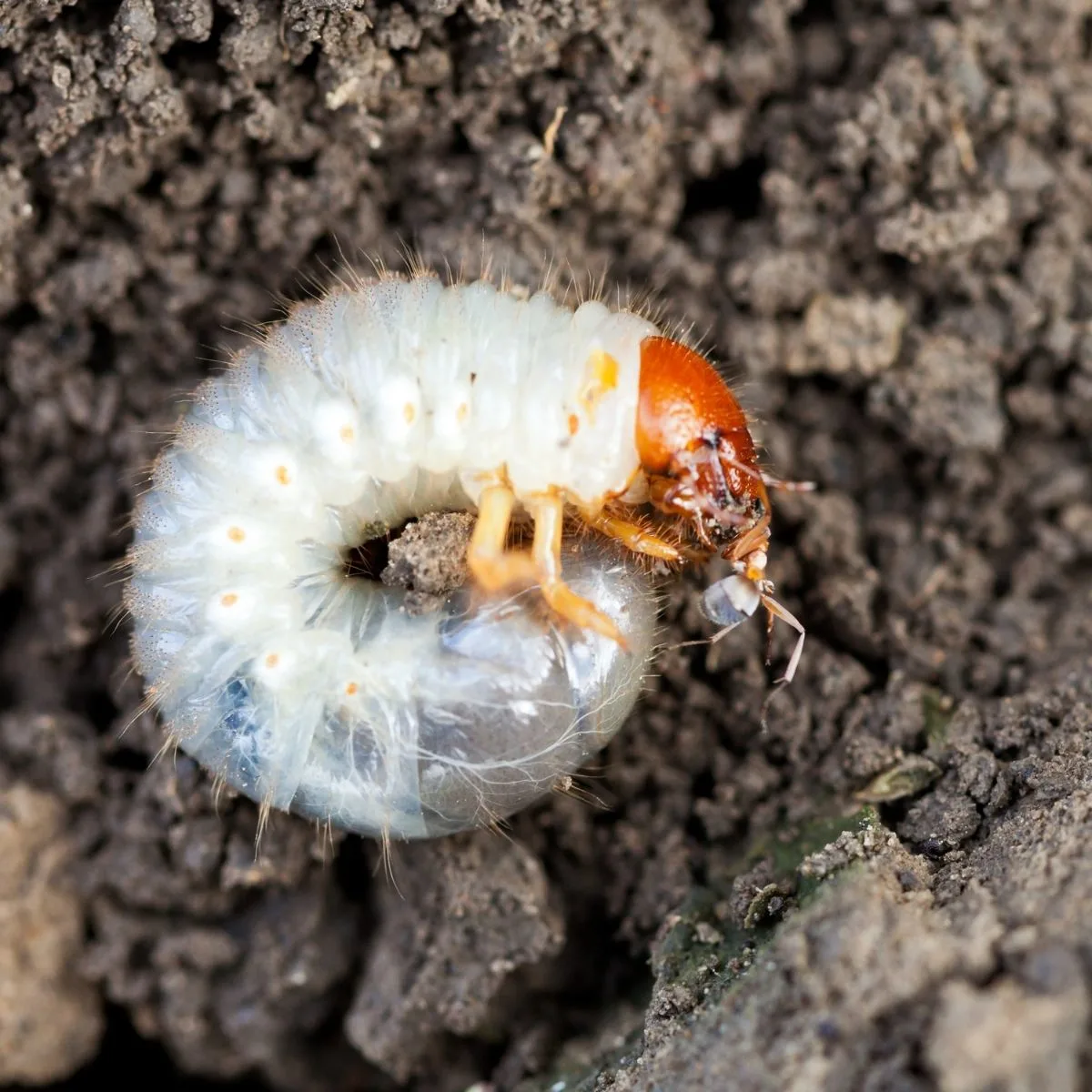
Japanese beetle grubs will be C-shaped, have white to cream colors, and have a distinctive tan-colored head. The legs on the grub are easy to see. They can be from 1/8 an inch to a full inch long. They will look just like other white grubs and it’s difficult to distinguish them without examining the patterns on the spines and the hairs that they have under the tip of their abdomen. You will have to pick them up and look more closely to be sure.
Adult
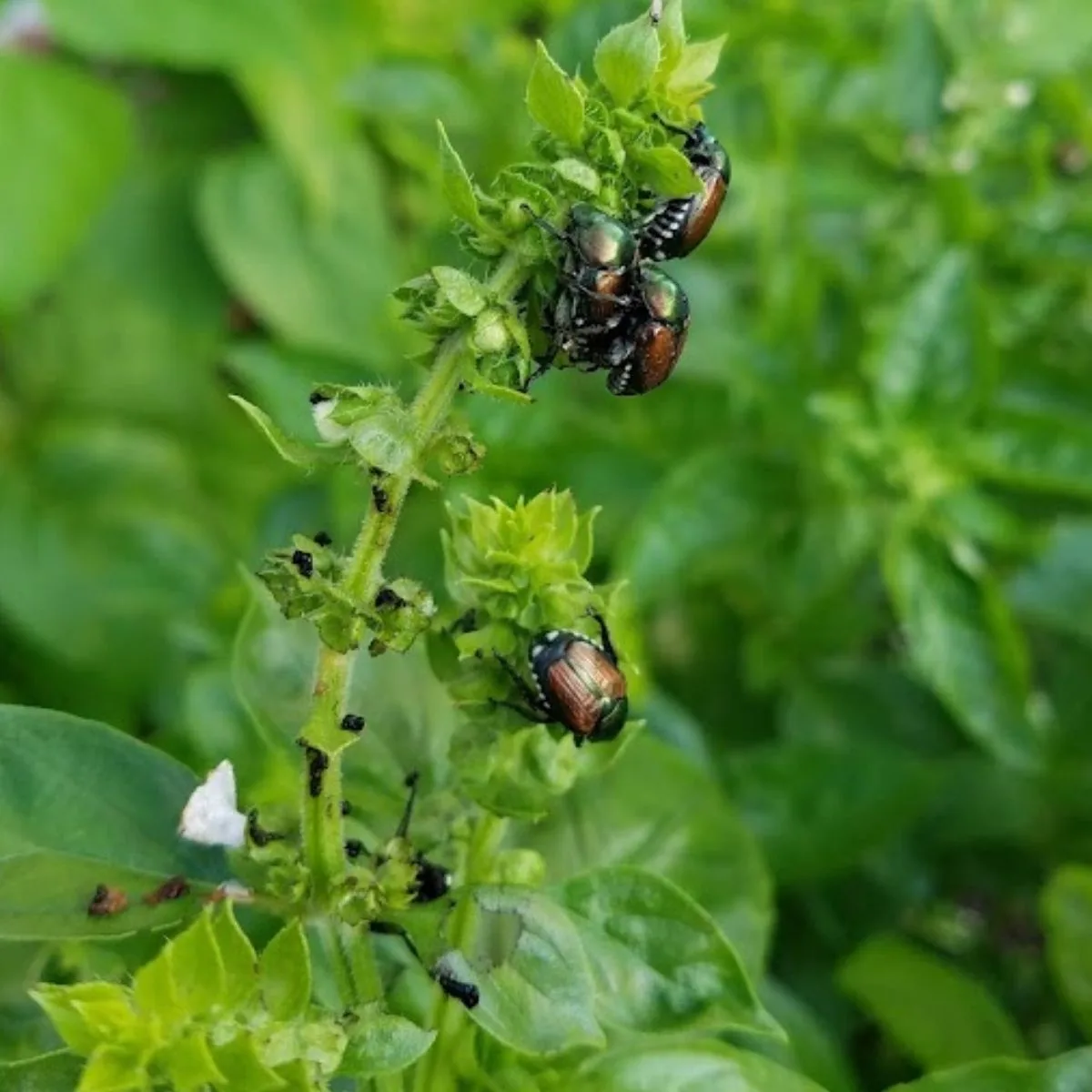
Adults are much easier to identify but by the time you have adults in your garden, they’re likely already doing a ton of damage to your plants. They can be about 1/3 to ½ an inch long and are most easily identified by the green head and thorax and the fact that it appears iridescent and will glitter and shine in the sunlight.
They have copper-brown wing covers and patches of white hairs on the abdomen. The adults will feed on the leaves, flowers, and fruits of over 300 plant species, doing considerable damage. Let’s look more into what they eat.
What Do Japanese Beetles Eat?
Japanese beetles are a pest to many gardeners and houseplant owners alike as they can do a large amount of damage to many different types of plants. When it comes to these beetles and their diets, the more appropriate question would be, “what do Japanese beetles not eat?”
Once they are adults, they are far from picky with what they eat. Adult Japanese beetles are known to eat more than 300 different species of plants. This would not be so bad if the beetles were few and far between, but since they feed in groups, they can wipe out a lot of plants in a very short period of time.
These beetles will start at the top of the plant and eat their way down to the bottom of the plant. This group feeding behavior that the beetles are known for causes the devastation of the plant or tree they are feeding on. And this is why many gardeners worry about getting these dreaded pests in their own gardens.
To make things worse, when they’re eating the plant, it gives off an odor that attracts even more Japanese beetles to the plant, making its demise even more imminent. Let us look at the plants that these specific beetles eat, so you can see which of your plants are in danger.
The Vegetable and Fruit Plants That Japanese Beetles Eat
There are fruit and vegetable plants that the Japanese beetle will go after more than some other species. However, they are not generally picky with fruit and vegetable plants as they produce sweet-tasting produce that the beetles cannot resist.
The list of fruit plants that the Japanese beetle will go after the most include:
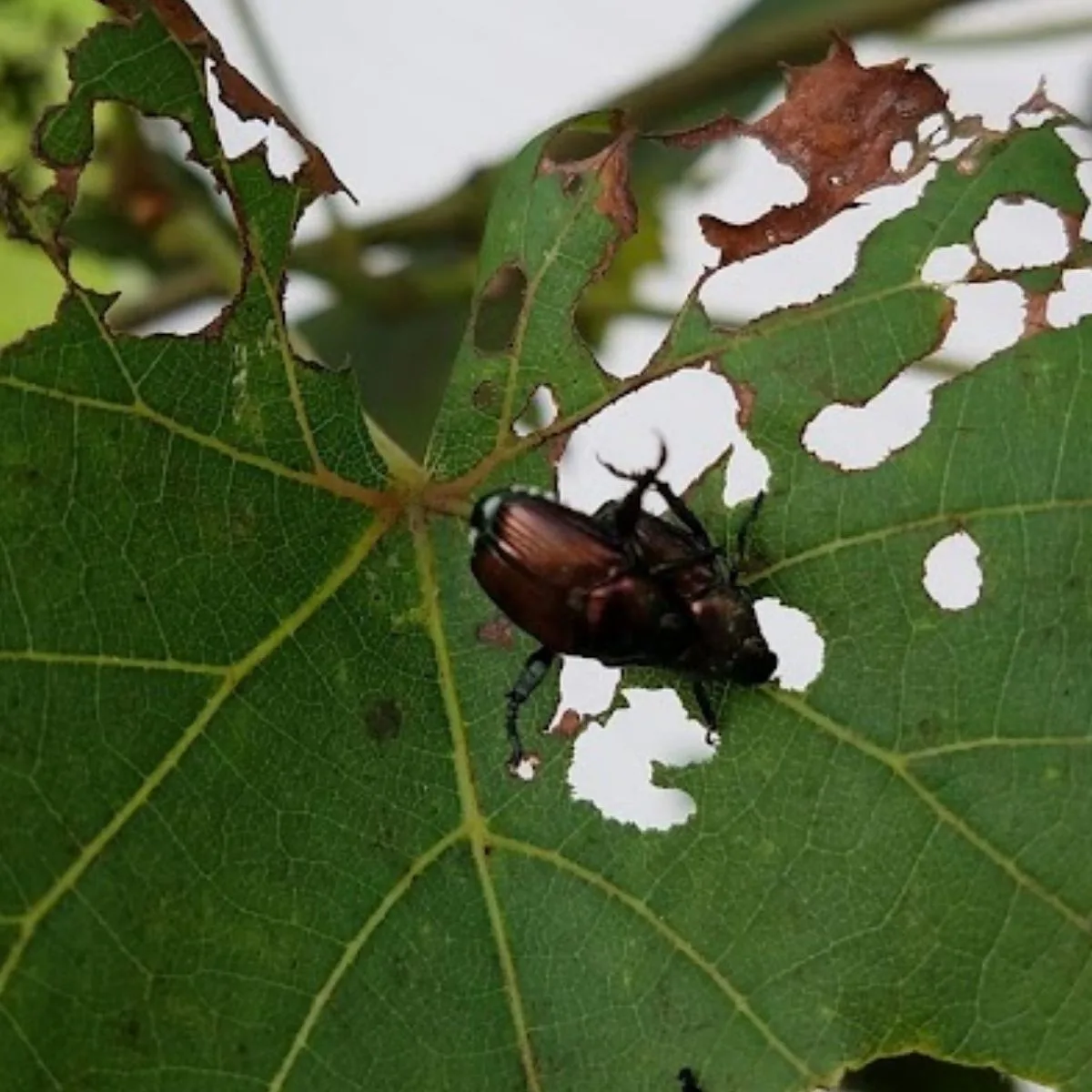
- Grape vines
- Raspberry bushes
- Blackberry bushes
- Blueberry bushes
- Strawberry plants
The list of vegetable plants that they will attack the most are:
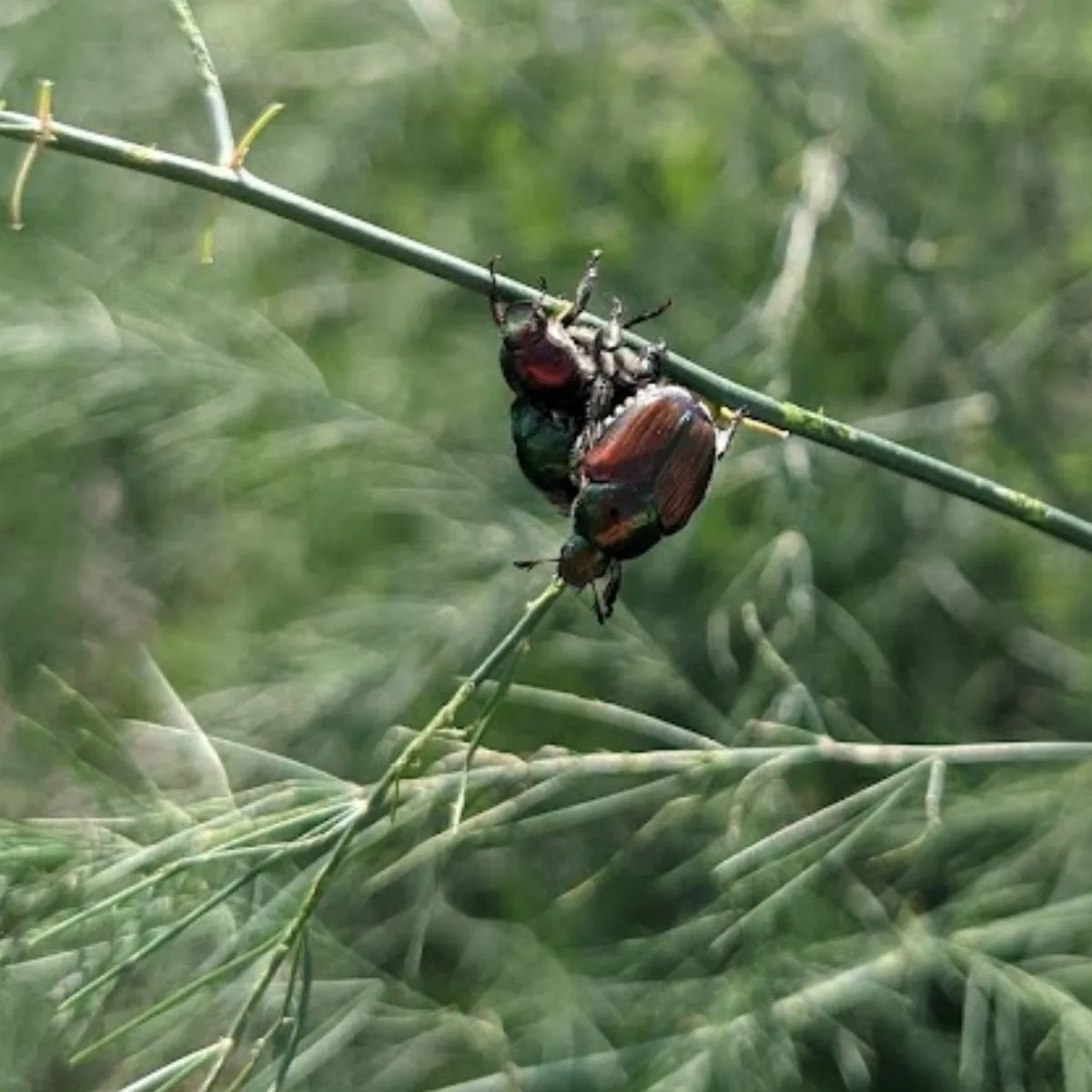
- Asparagus
- Corn
- Beans
- Rhubarb
- Okra
- Eggplants
- Pepper
- Potatoes
All the fruit and vegetable plants listed above are highly susceptible to attacks from Japanese beetles. These plants can be affected at a large scale just as much as a home vegetable patch. This can lead to many issues, not only in someone’s home garden and supplies, but it can also cause large issues for the industries that produce these fruits and vegetables commercially.
If they attack a large farm, this can affect the entire year’s harvest for that farm, leading to a lack of that product on the market and lower income for farmworkers.
The Trees That Japanese Beetles Eat
There are several tree species that are particularly susceptible to attacks from Japanese beetles. These trees are in many gardens across the world, and they are a feast for these beetles. We are separating this list into two; one includes the ornamental trees the beetles eat, the other is the agricultural trees, and the producing trees that beetles eat.
The more ornamental trees include:
- Birch
- Crabapple
- Crape myrtle
- Littleleaf linden
- Japanese maple
- Purple leaf plum
- Weeping cherry
- Norway maple
- Ornamental cherry
- Black walnut
- English and American elm
- Pin oak
The agricultural and producing trees include:
- Peach trees
- Apricot trees
- Plum trees
- Cherry trees
- Apple trees
The trees that are highly susceptible to these pests are the producing and agricultural trees, as the beetles will not only eat the leaves of the trees by the fruit they grow. If there is an infestation on a farm that grows these trees, this can immensely affect industries that produce these fruits and the people that rely on them for their income, causing a large problem.
Which Ornamental Plants Do Japanese Beetles Eat?
Ornamental plants are not safe from an attack from Japanese beetles either. There are several ornamental plants that these beetles will go after. This can leave your garden looking bare as the beetles eat their way through and destroy your plants.
The ornamental plants that attract this beetle species to your garden the most include:
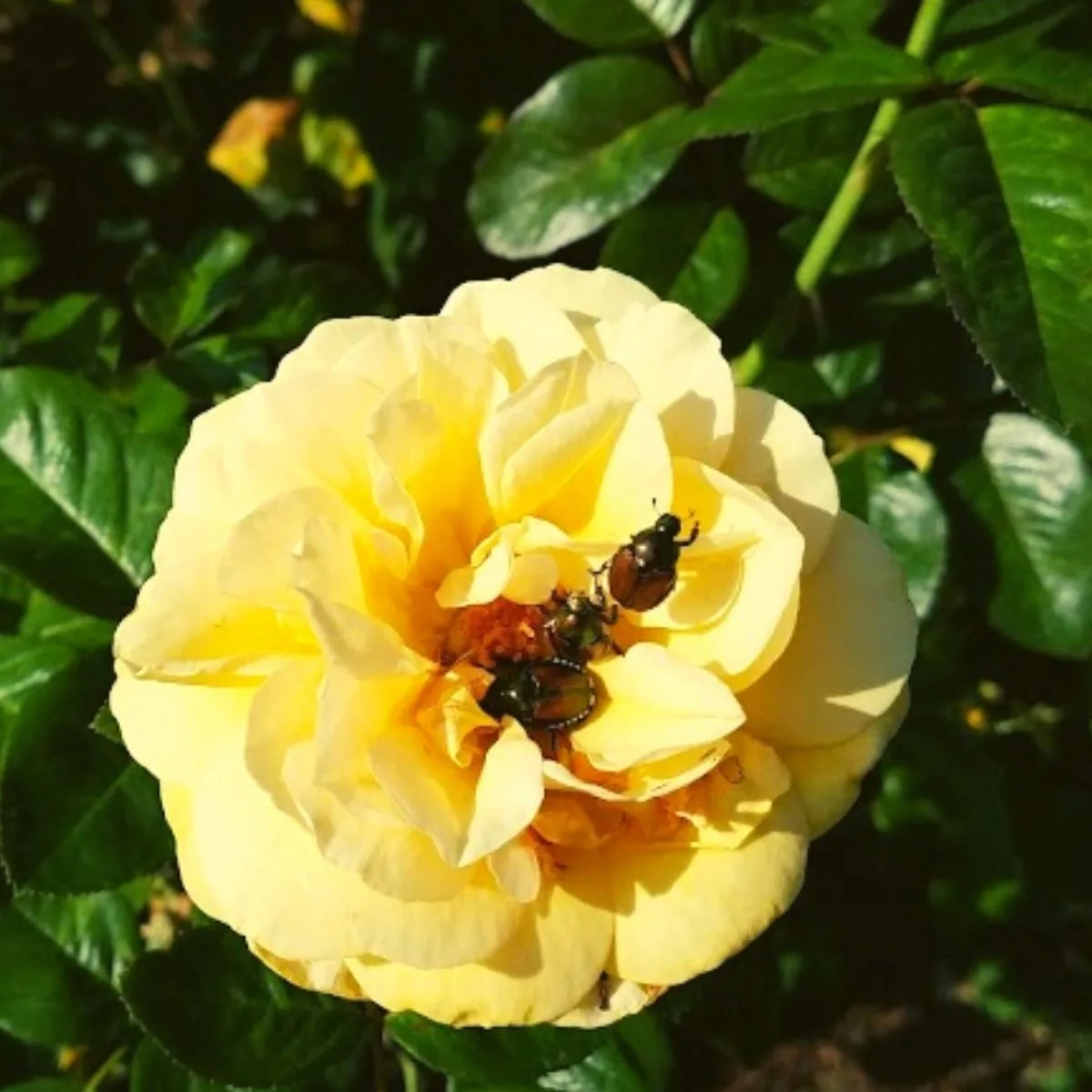
- Roses
- Hollyhocks
- Virginia creeper
- Althaea
- Clematis
- Morning glory
- Hibiscus
- Cardinal flowers
- Gladiolus
- Sunflower
The ornamental plants listed above are just a few of the ones that they will actively go after if they find their way into your garden. These plants will bear the brunt of the damage from the beetles when they first enter your garden.
Which Plants Do Japanese Beetles Prefer to Eat
As the Japanese beetle eats over 300 different plant species, it is challenging to tell which exact plants are their favorites to munch on. But we do know that they will start with your vegetable patch or fruit plants or fruit trees when they first enter your garden.
It is believed that this is because the vegetables and fruits offer sweet-tasting produce, so the beetles have something other than the plant’s leaves to enjoy. These plants also generally have a stronger scent than plants that do not produce fruits and vegetables, so they may also be easier for the beetles to find.
The Damage That Japanese Beetles Cause to Plants
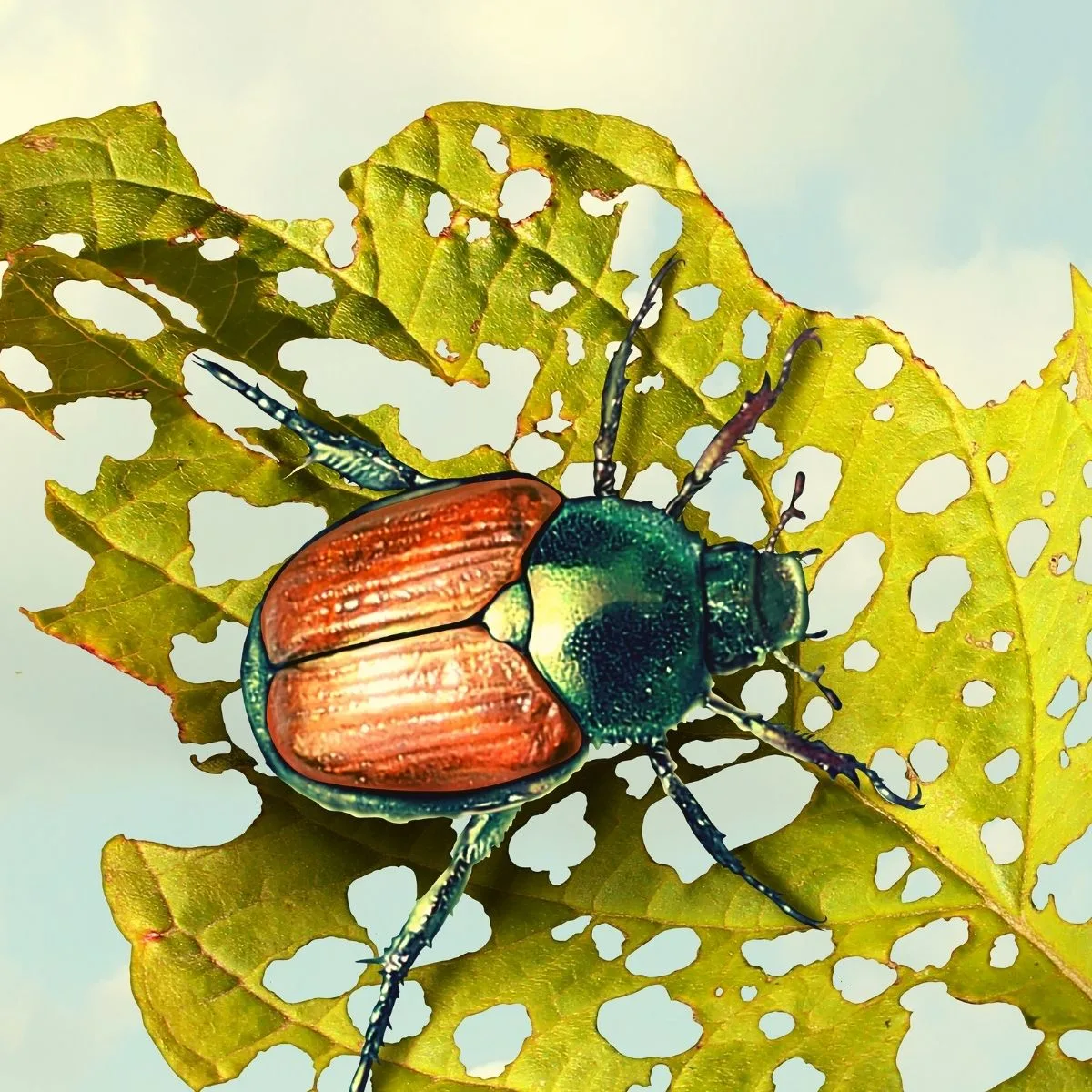
The adult beetle can cause a large amount of damage to a plant, and in some cases, it can kill the plant entirely. The adult beetles will eat the leaves and fruit of the plant first, and they will sometimes make their way to the plant’s stems, depending on the plant.
The beetles will eat around the veins of the leaves, giving them almost a skeletal appearance, which can affect the plant’s ability to photosynthesize. This can cause plants death. The grubs larvae of the Japanese beetles can do just as much damage as the adults.
The larvae are hatched in the soil in your garden, and they eat the roots of the same plants the adults eat. So, your plants are getting attacked from both fronts. The larvae are the most difficult to get rid of as they are underground, but it is possible if you call a garden service for help.
Or, you can dust your garden with milky spores.
Should you use Japanese beetle traps?
In an attempt to keep these pests out of your garden and prevent them from harming your plants, you may be tempted to use Japanese beetle traps. However, studies have shown that this can cause more harm than good.
The biggest issue with traps is that they really only tell you how bad your infestation is, and while they might help you get rid of a lot of beetles at once, it’s not going to solve your long-term problem, especially if you live in a residential area close to other people’s yards and gardens.
Studies have shown that these traps, which use pheromones to attract the beetles, can actually lure pests from as far as five miles. If you live on a large-acreage farm, this may be useful. But if you live in a residential area, you could actually be attracting a good part of the neighborhood’s beetles and not just targeting the ones in your own yard.
If you have a large property and can put the trap far away from your garden, it might work effectively to lure them toward the trap and away from your garden. However, in smaller spaces, they are just luring the pests in toward your garden.
Traps can bring beetles in at a higher rate and even lead to more damage than if you had never used them at all. While it’s true that placement and proper use can greatly improve your experience with the traps, they’re still not right for everyone and there may be better options for you to consider.
Conclusion
So, what do Japanese beetles eat? They are not picky in any way when it comes to the plants they eat. They can easily destroy your entire garden within days, if you have the plants they love, such as a fruit tree. Some plants you should watch closely if you have them on your property are:
- Rose
- Crepe myrtle
- Pin oak
- Linden
- Crabapple
- Apple
- Cherry
- Plum
- Apricot
- Peach
- Birch
- Japanese maple
- Norway maple
If you need to use a product to control your beetle population, neem oil has been proven effective against Japanese beetle adults. And they move very slow so if you spot them actively munching on your plants, you can just pluck them off. You can toss them into a bucket of soapy water.
These pests will not only affect your garden, but they can affect whole industries if they find the right farm. They can be controlled easier if they are in their adult stage but can be challenging when they are larvae.
Understanding what they like to eat and the telltale signs they are there are the first steps to treating a Japanese beetle infestation.
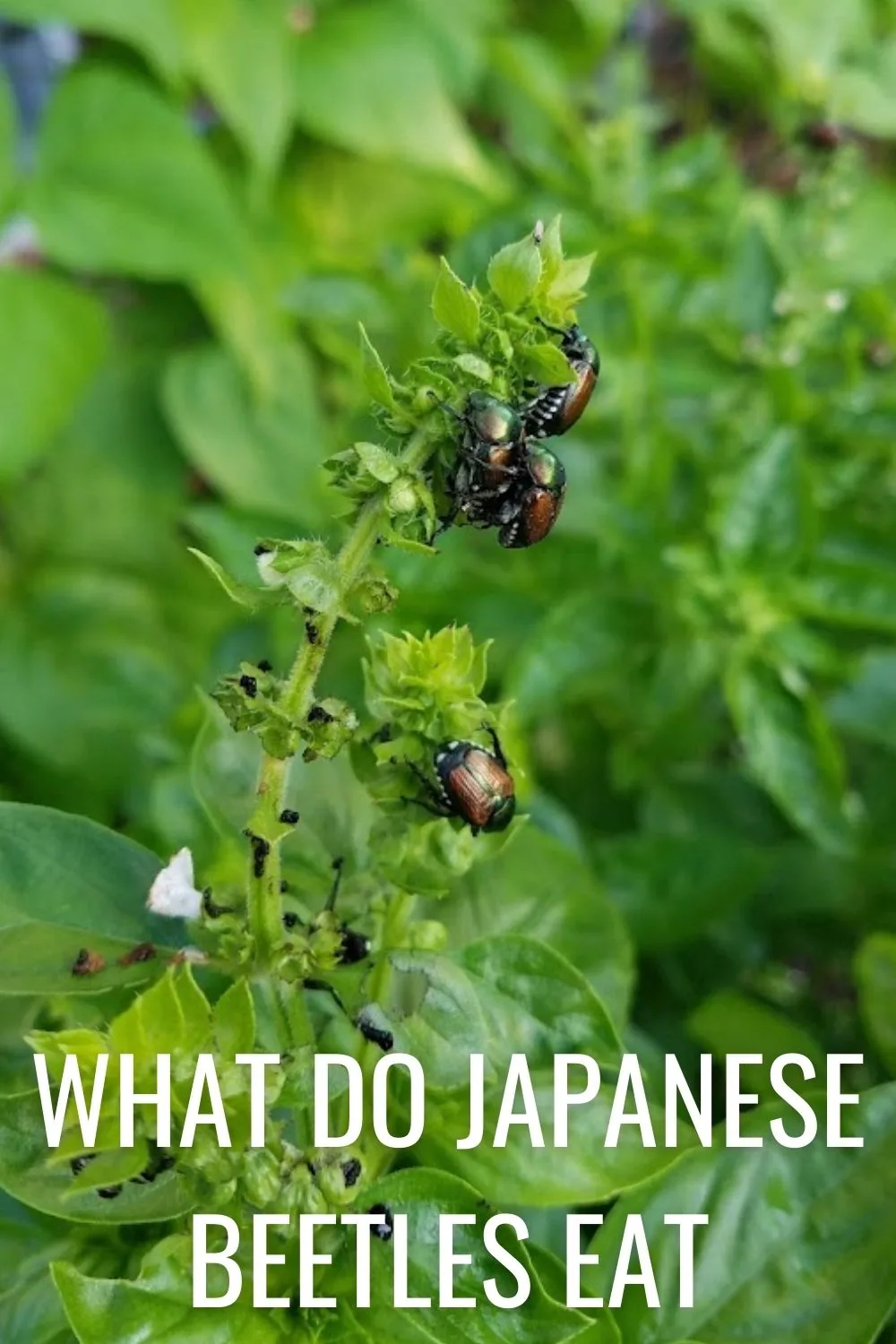

How To Get Rid Of Japanese Beetles And Save Your Garden
Wednesday 27th of July 2022
[…] Learn more about what Japanese beetles eat. […]